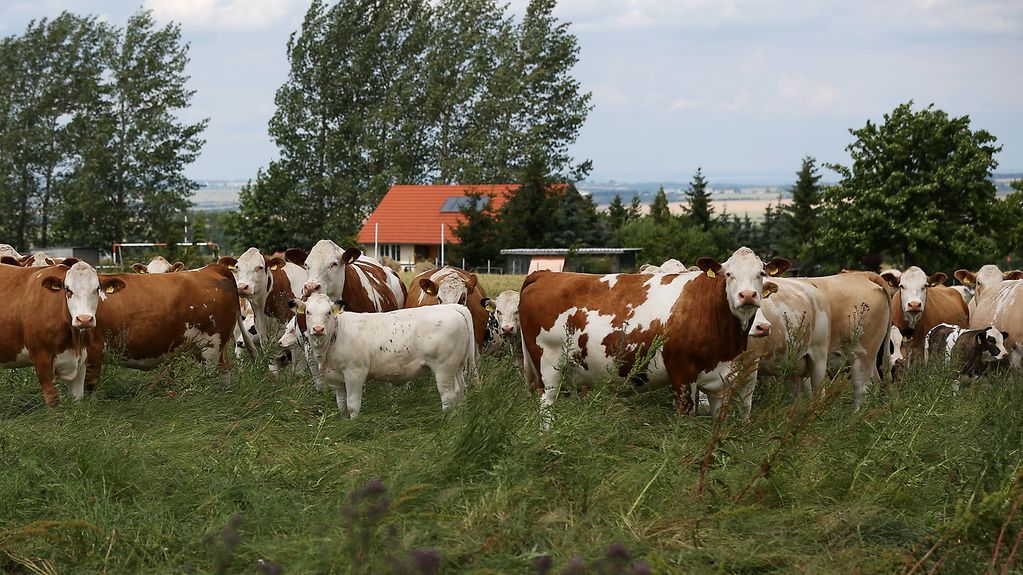Background
On Monday and Tuesday the EU agriculture ministers met in Luxembourg to negotiate the reform of the Common Agricultural Policy (CAP).They are discussing a fundamental simplification of the CAP. More compensation is also to be paid for climate, environmental and conservation services. Here are 10 interesting facts about the Common Agricultural Policy.
2 min reading time

Cows in a field
The Common Agricultural Policy puts farming in Europe on a more sustainable and environmentally sound footing, and retains a reliable and stable framework.
Photo: Ronny Hartmann
- Agricultural policy is one of the most communitarised policy fields in the European Union. The central regulations and concomitant financing of measures come from the EU level. CAP stands for "Common Agricultural Policy".
- Since 1962, the CAP has been in place to ensure above all that farmers have an appropriate income and that food supplies in Europe are guaranteed.
- The EU member states want the CAP to be a common policy that also plays a major part in the use and conservation of natural resources and the development of rural areas.
- Currently the sector receives about 58 billion euros a year in assistance. That is equivalent to some 40 per cent of the EU budget, making it the largest EU budget item by a long way.
- Between 2014 and 2020 Germany received about 6.2 billion euros in EU agriculture funding a year. The funds are divided into two pillars.
- The first pillar is used to finance direct payments to farmers. These funds are particularly important for the survival of small and medium farms and for farms in disadvantaged regions. Direct payments under the CAP help secure and stabilise farmers’ income, by balancing the fluctuating prices of agricultural produce, which can be extreme in some cases.
- 30 per cent of funds are tied to certain conditions that farmers must meet (what is termed "greening"). This can involve diversifying crops, ensuring crop rotation and thus crop diversity, the sustainable preservation of grasslands and ecological focus areas with farming methods that are particularly beneficial for climate change mitigation and environmental protection.
- The second pillar involves targeted assistance programmes for sustainable and environmentally sound farming and rural development. This includes agri-environmental programmes and the promotion of organic farming.
- The CAP benefits everybody in Germany and in the EU. Firstly, it ensures a reliable supply of high quality, nutritious food at affordable prices. Secondly, it rewards the services that farmers provide for the general good, such as creating employment and income generating opportunities in rural areas.
- The CAP also rewards services that conserve and protect the environment in all parts of Germany, in the form of what are known as voluntary agri-environmental and climate measures.
According to a current survey conducted by the EU statistics office Eurostat three out of every four EU citizens are familiar with the Common Agricultural Policy and believe that it benefits all citizens. 95 per cent of those interviewed stated that agriculture and rural areas are important for our future in the European Union. Over 27,000 citizens in the 27 EU member states took part in the survey.